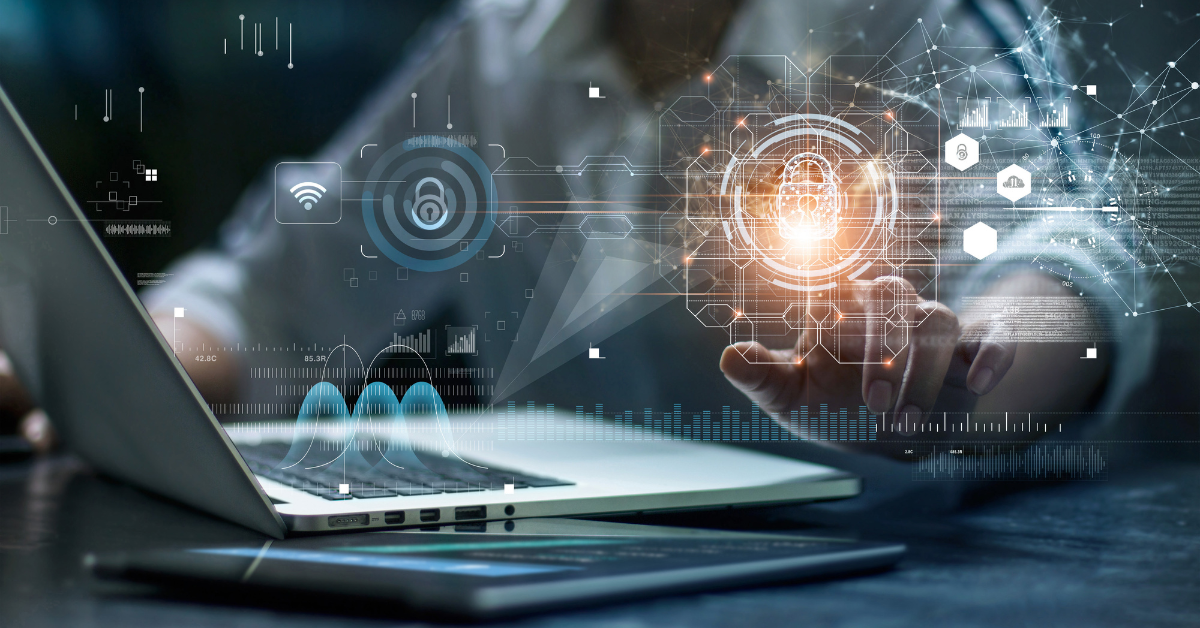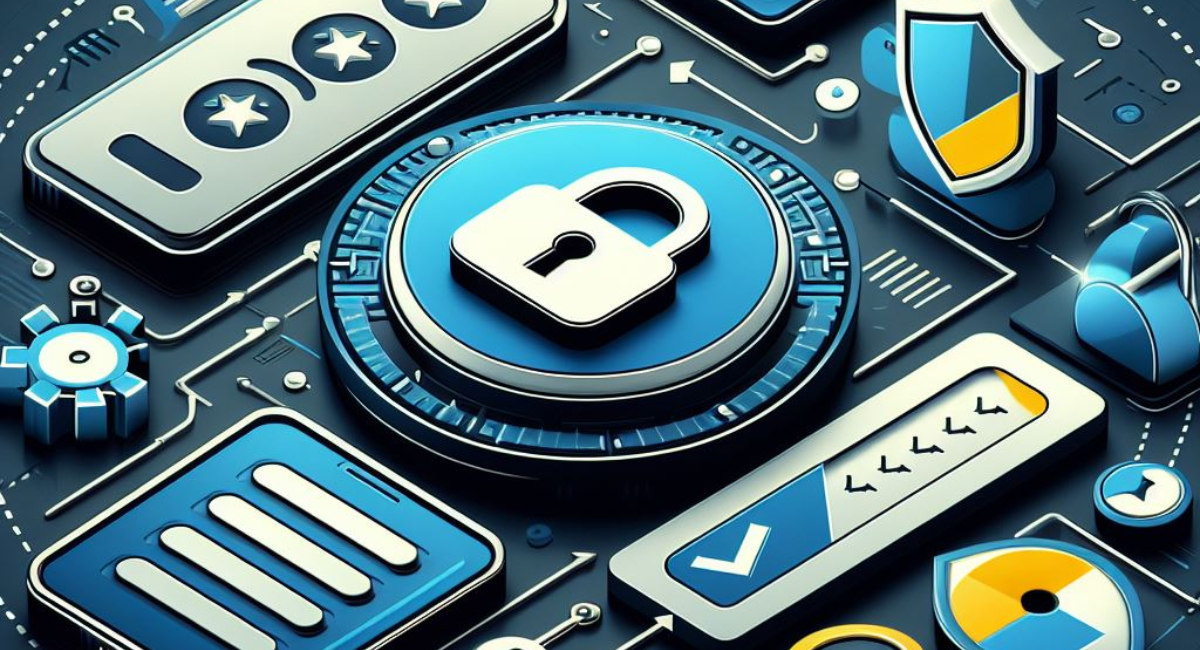Digital security at home is essential to protect personal information, prevent identity theft, ensure financial security, preserve privacy, and defend against cyberattacks. It also prevents unauthorized access to your network and sets a positive example for family members. By following best practices, such as using strong passwords, enabling two-factor authentication, and keeping software updated, you can establish a robust defense. Regular backups, cautiousness against phishing, and educating your family further enhance your security posture. Additionally, using a VPN on public Wi-Fi and staying informed about the latest threats are crucial.
The Importance of Digital Security at Home

Digital security at home is not just a matter of convenience; it’s a fundamental necessity for several reasons:
1. Protection of Personal Information: Home computers and devices often contain sensitive personal information, including financial records, medical data, personal communications, and more. Maintaining robust digital security safeguards this information from unauthorized access and potential theft.
2. Prevention of Identity Theft: Cybercriminals can use stolen personal information to commit identity theft, which can have severe financial and legal consequences for the victims. Strong digital security measures help prevent this fraud by keeping your data safe.
3. Financial Security: Online banking, shopping, and financial transactions have become commonplace. Cybercriminals can access your financial accounts without proper security measures and drain your funds, leading to significant financial losses.
4. Privacy Preservation: Maintaining digital security helps protect your online privacy. Unauthorized access to your devices or accounts can expose personal photos, messages, and other private information, potentially resulting in embarrassment or harm.
5. Prevention of Cyberattacks: Cyberattacks, such as malware infections, ransomware attacks, and phishing attempts, can disrupt your digital life, steal your data, or compromise your devices. Implementing digital security measures acts as a defense against these ever-evolving threats.

6. Preventing Unauthorized Access: Home networks are susceptible to intrusion by cybercriminals. Securing your Wi-Fi network and individual devices prevents unauthorized users from accessing your network and potentially engaging in malicious activities or stealing your bandwidth.
7. Protecting Family Members: If you share devices or a network with family members, maintaining digital security safeguards their data and online experiences. It also sets a positive example for responsible digital behavior, helping to protect your loved ones.
8. Preventing Botnet Participation: Unsecured devices can be recruited into botnets, networks of compromised devices used for cyberattacks. Securing your devices helps prevent them from being used maliciously, contributing to a safer internet ecosystem.
9. Cybersecurity Hygiene: Practicing good digital security habits at home helps individuals develop a cybersecurity mindset that can be applied professionally. This, in turn, contributes to broader efforts to combat cyber threats on a global scale.
10. Supporting a Safer Internet: Every individual’s commitment to digital security contributes to a safer overall Internet environment. The more secure individuals are, the harder it is for cybercriminals to thrive, making the internet safer for everyone.
Best Practices for Maintaining Digital Security at Home

1. Strong, Unique Passwords:
- Use complex passwords that include a mix of letters, numbers, and symbols.
- Avoid easily guessable information like birthdays or common words.
- Consider using a password manager to generate and store passwords securely.
2. Two-Factor Authentication (2FA):

- Enable 2FA whenever possible for your online accounts.
- This adds an extra layer of security by requiring a second verification step, typically a code sent to your mobile device.
3. Regularly Update Software:
- Keep your operating system, applications, and antivirus software up to date.
- Software updates often include security patches to fix vulnerabilities.
4. Secure Your Wi-Fi Network:
- Change the default router login credentials.
- Use strong encryption (WPA3) and a strong passphrase for your Wi-Fi network.
- Consider hiding your SSID (network name) to make it less visible to potential attackers.
5. Firewall Protection:
- Enable your computer’s built-in firewall or install a reputable third-party firewall.
- Firewalls help monitor and control incoming and outgoing network traffic.
6. Regular Backups:
- Backup your important data regularly to an external device or cloud storage.
- You can restore your data in case of a cyberattack or hardware failure.
7. Beware of Phishing:
- Be cautious of unsolicited emails, links, or attachments.
- Verify the sender’s identity before clicking on any links or downloading files.
- Contact the sender directly to confirm the email’s legitimacy when in doubt.
8. Secure Physical Access:
-
- Lock your devices when not used, and use strong PINs or passwords.
- Consider using biometric authentication (e.g., fingerprint or facial recognition) if available.
9. Guest Network:
- Set up a separate guest network for visitors.
- This isolates their devices from your main network, reducing potential risks.
10. Regular Security Audits:
- Periodically review your security settings and update them as needed: Regular security audits are essential to ensure your digital defenses remain effective. Set aside time to review the security settings on your devices, accounts, and network. Look for any vulnerabilities or outdated configurations that attackers could exploit.
- Remove unused accounts or devices from your network: Over time, you may accumulate unused or forgotten accounts and devices connected to your network. These can be potential entry points for cybercriminals.
11. Secure Your Webcam and Microphone:
- Disable or cover your webcam when not in use to prevent unauthorized access: Many modern laptops and webcams come with built-in cameras that hackers can remotely activate if left unprotected.
- Mute your microphone when not needed: Just as your webcam can be a potential privacy concern, so can your microphone. To prevent eavesdropping or unintended audio recording, mute your microphone when you’re not using it for voice or video calls.
12. Educate Your Family:
- Teach your family about online safety and the importance of strong security practices: Cybersecurity education is a powerful tool for protecting your household. Ensure your family members, including children, understand the basics of online safety.
- Ensure they are aware of common threats like phishing and malware: Discuss common online threats with your family, such as emails that attempt to trick users into revealing sensitive information or downloading malicious software.
13. Use a VPN (Virtual Private Network):
- If you frequently use public Wi-Fi, consider using a VPN to encrypt your internet traffic and protect your data from potential eavesdroppers. Public Wi-Fi networks, such as coffee shops or airports, are often less secure and can be targeted by cybercriminals. Using a VPN (Virtual Private Network) encrypts your internet traffic, making it much more challenging for malicious actors to intercept and exploit your data.
14. Regularly Review App Permissions:
- Check the permissions apps have on your devices and revoke any unnecessary access: Many mobile apps request various permissions to access your device’s features and data.
- Only grant permissions essential for the app’s functionality: When installing or updating apps, carefully review the permissions they request.
15. Stay Informed:
- Keep up-to-date with the latest security news and trends: Staying informed about the ever-evolving landscape of cybersecurity threats is crucial. Subscribe to reputable cybersecurity news sources, follow security experts on social media, and participate in online forums or communities focused on digital security.
FAQs
What are some common threats to digital security at home?
Common threats include malware (viruses, spyware, ransomware), phishing attacks, identity theft, unauthorized access to devices or networks, and data breaches.
How can I create strong and secure passwords?
To create strong passwords, use a combination of letters (both upper and lower case), numbers, and special symbols. Avoid using easily guessable information like birthdays or common words. Consider using a reputable password manager for generating and storing complex passwords.
What is Two-Factor Authentication (2FA), and why should I use it?
2FA is an extra layer of security that requires you to provide two different authentication factors (e.g., a password and a code sent to your mobile device) to access an account. It adds a significant layer of protection, making it much harder for unauthorized users to access your accounts.
How often should I update my software and operating system?
It’s essential to regularly update your software and operating system, as updates often include security patches that fix vulnerabilities. Set up automatic updates to ensure you’re always running the latest, most secure versions.
What are some best practices for securing my Wi-Fi network?
Secure your Wi-Fi network by changing default router login credentials, using strong encryption (WPA3), and setting a strong passphrase. Additionally, consider hiding your network’s SSID to make it less visible to potential attackers.
What should I do if I suspect a phishing email or message?
If you receive a suspicious email or message, do not click on any links or download attachments. Verify the sender’s identity by contacting them directly through a trusted channel. Report the phishing attempt to your email provider or relevant authorities.
Conclusion
Maintaining digital security at home is not just a matter of convenience; it’s a fundamental necessity in our increasingly connected world. By implementing strong security measures and following best practices, you can safeguard your personal information, protect against cyber threats, and contribute to a safer and more secure online environment. Remember, digital security is an ongoing process that requires vigilance and continuous adaptation to the ever-evolving threat landscape.
